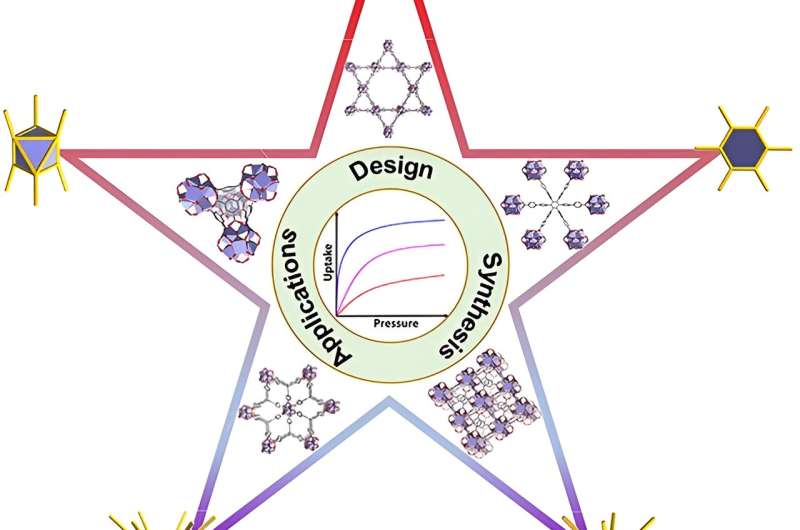This article has been reviewed according to Science X's editorial process and policies. Editors have highlighted the following attributes while ensuring the content's credibility:
fact-checked
trusted source
proofread
Design, synthesis and applications of functional zirconium-based metal-organic frameworks

In a review led by Prof. Zhijie Chen's group from Department of Chemistry at Zhejiang University, an overview of recent progress in the development of Zr-MOFs is provided. The article titled "Design, synthesis and applications of functional zirconium-based metal-organic frameworks" is published in the journal Science China Chemistry.
The authors summarize how reticular chemistry can be applied to the design, synthesis, and applications of some representative Zr-MOFs. Furthermore, the authors also provide an outlook on the future development of Zr-MOFs.
The authors first introduce reticular chemistry and how it can be applied to the rational design and synthesis of Zr-MOFs to achieve the targeted structure and/or properties. Synthetic strategies, including isoreticular expansion, linker functionalization, node functionalization, post-synthetic modification, and defect engineering, are then discussed in the context of applications.
Finally, the authors provide perspectives on the future development of Zr-MOFs in terms of synthesis and application of multicomponent and multifunctional Zr-MOFs and their commercialization.
"Although advances have been achieved regarding the synthesis and functionalization of Zr-MOFs, opportunities still wait regarding the synthesis and applications of Zr-MOFs. For example, new design strategies (e.g., merged net, retrosynthesis) that allow the precise installation of functional groups into specific MOF structures should be further explored," said author Zhijie Chen.
"In addition, regarding the practical application prospects of Zr- MOFs, more attention should be paid to emerging synthesis techniques, such as the slurry- and water-based synthesis and the synthesis via electrochemistry, mechanochemistry, and microwave approaches."
More information: Le Shi et al, Design, synthesis and applications of functional zirconium-based metal-organic frameworks, Science China Chemistry (2023). DOI: 10.1007/s11426-023-1809-8
Provided by Science China Press





















